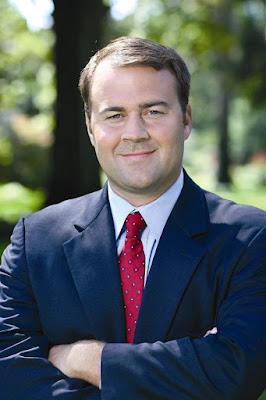 Pictured is Ohio Democratic Party Chairman David Pepper
Pictured is Ohio Democratic Party Chairman David Pepper
www.clevelandurbannews.com) / (www.kathywraycolemanonlinenewsblog.com). Tel: (216) 659-0473 and Email: editor@clevelandurbannews.com
|
|
By Editor-in-Chief Kathy Wray Coleman, a-23-year journalist who trained at the Call and Post Newspaper in Cleveland, Ohio for 17 years, and who interviewed now President Barack Obama one-on-one when he was campaigning for president. As to the Obama interview, CLICK HERE TO READ THE ENTIRE ARTICLE AT CLEVELAND URBAN NEWS.COM, OHIO'S LEADER IN BLACK DIGITAL NEWS
Kathy Wray Coleman is the most read reporter in Ohio on Google Plus. CLICK HERE TO GO TO GOOGLE PLUS WHERE KATHY WRAY COLEMAN HAS 2.7 MILLION READERS OR VIEWERS UNDER HER NAME AND IS OHIO'S MOST READ REPORTER ON GOOGLE PLUS alone
CLEVELAND URBAN NEWS.COM,-WASHINGTON, D.C.- The U.S. Supreme Court on Monday, in the celebrated case of Evenwel v. Abbott, unanimously rejected an effort by two right-wing Texas plaintiffs to convince the high court to reinterpret the 'one person one vote' democratic principle. That controversial principle, a federal law in fact, currently requires that state legislative districts are drawn or redrawn based upon the total population in the respective states.
The plaintiffs in the case, who were represented by the conservative advocacy group the Project on Fair Representation, petitioned the court on appeal to reinterpret the 'one person one vote' law adopted by Congress in the 60s under the Voting Rights Act, and during the height of the Civil Rights Movement and voter discrimination against a disenfranchised Black community.
The federal mandate considers all citizens within the state population as among the voters for purposes of redistricting, whether they are registered voters or not, and inclusive of children and the mentally ill.
The central argument by the plaintiffs, that was outright disregarded by the justices, is that only registered voters, whom data show are overwhelmingly and disproportionately White, should be counted in the formula for redistricting.
“We hold, based on constitutional history, this court’s decisions and longstanding practice, that a state may draw its legislative districts based on total population,” liberal justice Ruth Bader Ginsburg wrote in her opinion for the Court.
Conservative justices Samuel Alito and Clarence Thomas, who is Black and routinely, if not always, subordinates women and the Black community with his ultra-conservative stances on public policy issues, concurred only in judgment, both saying that states should, in the future, be given more decision- making autonomy in the matter.
Had the eight-member high court, minus Justice Antonin Scalia, who died in February, ruled in favor of the plaintiffs, who argued that their right to equal protection under the law, via the fourteenth under amendment, had been violated, legislative districts now drawn or redrawn based upon an increase or decrease in population, would be drawn or redraw based upon the number of people that are eligible to vote.
That scenario, say some political pundits and Civil Rights advocates, would likely result in a decrease in Democratic and Black representation in state legislatures across the country since minorities, including Blacks, traditionally vote at a lower rate than their affluent White counterparts for various reasons. They argumentatively include poverty, still existing racism, and voter suppression laws adopted by Republican controlled state legislatures in recent years.
“Today the U.S. Supreme Court ruled unanimously against the right-wing activists that were trying to throw out the democratic principle of ‘one person, one vote,’ upend the legislative redistricting process all across the country and cause electoral chaos," said Ohio Democratic Party Chairman David Pepper in a press statement on Monday to Cleveland Urban News.Com, Ohio's most read digital Black newspaper.
"This case could have been a huge power grab away from Ohio’s cities, which is why we worked with the mayors of Cleveland, Columbus, Dayton and Toledo to participate in an amicus brief in support of ‘one person, one vote," said Pepper.
In addition to state legislative districts, municipalities that are typically divided into wards, and metropolitan districts such as the setup in Louisville, legislative seats for the U.S House of Representatives, which now has 464 voting members, six non-voting members and one vacant seat, are also redrawn based upon population data.
Ohio has 16 congressional districts, each represented by a member of the U.S House of Representatives, a reduction from the previous 18 congressional districts, and per a declining state population as revealed by the 2010 Census.
11th Congressional District Congresswoman Marcia L. Fudge, a Warrensville Heights Democrat and Joyce Beatty, a Columbus Democrat, are the only two Blacks in Ohio in Congress.
The U.S. Senate is the only exclusion where each state, regardless of population, has two U.S. senators in Congress.
Local legislators, usually called councilmen or aldermen, and metropolitan or county legislators, also traditionally called councilpersons, adopt ordinances, and state legislatures, which consist of a state House of Representatives and a state Senate, adopt state laws.
Congress, which consists of the two legislative chambers of the U.S. House of Representatives and the U.S Senate, adopt federal laws.
Both the U.S. Senate and U.S. House are controlled by Republicans, though President Barack Obama, the first Black president of the United States, is a Democrat.
The Obama administration joined the state of Texas against the plaintiffs in the case.
www.clevelandurbannews.com) / (www.kathywraycolemanonlinenewsblog.com). Tel: (216) 659-0473 and Email: editor@clevelandurbannews.com
| < Prev | Next > |
|---|








